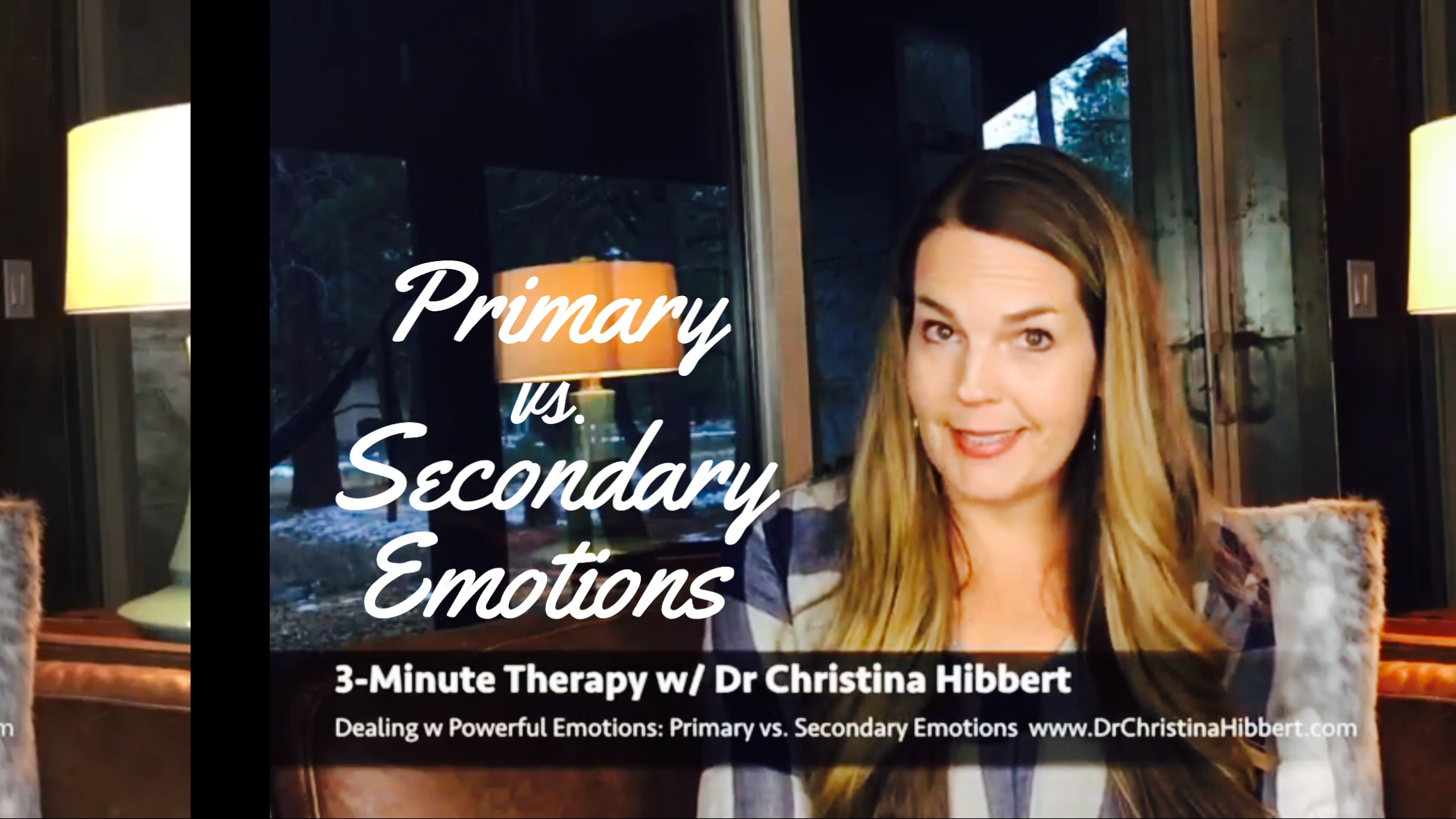
31 May Dealing with Powerful Feelings: Primary vs. Secondary Emotions
When it comes to powerful emotions–like anger, frustration, and guilt–we may not always know what we’re really dealing with. We may act out in anger, but really, we’re afraid. We may sink low into guilt, but really we’re in pain. We may lose it in frustration, but really, we’re grieving.
In fact, these three emotions are what we call “secondary emotions,” meaning there are usually deeper, even more powerful “primary emotions” feeding into them and making it difficult to actually identify, process, and work through what we feel so we can eventually be free.
What is the difference between primary and secondary emotions? Why is it important to understand and identify these? How can we work through what we’re really feeling? And what impact can learning these things have for our relationships, family, and children?
My latest “3-Minute Therapy” video will teach you about primary and secondary emotions, and get you started on your own path to dealing and healing. Watch it here, and check out the video summary, below.
SUBSCRIBE to my Dr. Christina Hibbert YouTube Channel and “3-Minute Therapy” playlist for more!
Dealing with Powerful Emotions: Primary vs. Secondary Emotions
VIDEO SUMMARY
When powerful emotions arise, it can be tough to know what to do with them. In my practice, I see this all the time, and it has helped tremendously to teach my clients about primary and secondary emotions.
The main principle here is that beneath all secondary emotions is always a primary, deeper, emotion. As we tap into that deeper emotion, we get to the source of what we’re feeling instead of trying to manage our feelings from the surface.
Examples of secondary emotions include: anger, guilt, frustration, overwhelm, worry, irritability, anxiety. When we focus on dealing with these, the more surface, emotions, we are missing the mark. In fact, it can often intensify what we feel. For example, if I’m angry at my child because she ran into a busy street and I yell at her, it might help in the moment to scare her back to safety, but if I stay angry, I’m only going to damage the relationship. Instead, if I can identify the underlying primary emotions–in this case, fear–I can meet my daughter from a more loving place of “I was so afraid when you did that,” versus the angry place of “What were you thinking?!’
Primary emotions include fear, sadness, pain, grief, or even joy. These are deeper, more intense emotions, and if we can tap down into these and FEEL them, it typically empowers us to approach our feelings in a calmer, more effective way.
Take anxiety for example. We may feel anxious, but really, we are afraid–afraid of losing something or someone, afraid of not being good enough, afraid of personal harm or injury. As we tap into the primary emotion beneath the anxiety–fear–we can then work to FEEL the fear and deal with that core emotion, and then, we can choose to let it go. If we never identify and feel the fear, we cannot and will not let it go.

As we work to identify the underlying emotions we’re really feeling, we gain more power over our emotions and how to handle them. Not only will this help us personally deal with life challenges and emotions; it’s especially helpful for our relationships.
As we identify that we are hurt or sad or in pain because of the actions of others, we can then express that hurt or sadness or pain instead of staying up in the anger or frustration that can too often damage relationships. And once we learn these things, we can then model and teach them to our children, as well.
Learn more about dealing with powerful emotions by watching my “3-Minute Therapy” video on How to Overcome Powerful Emotions: FEEL” and reading my post FEEL: How to Cope with Powerful Emotions.
